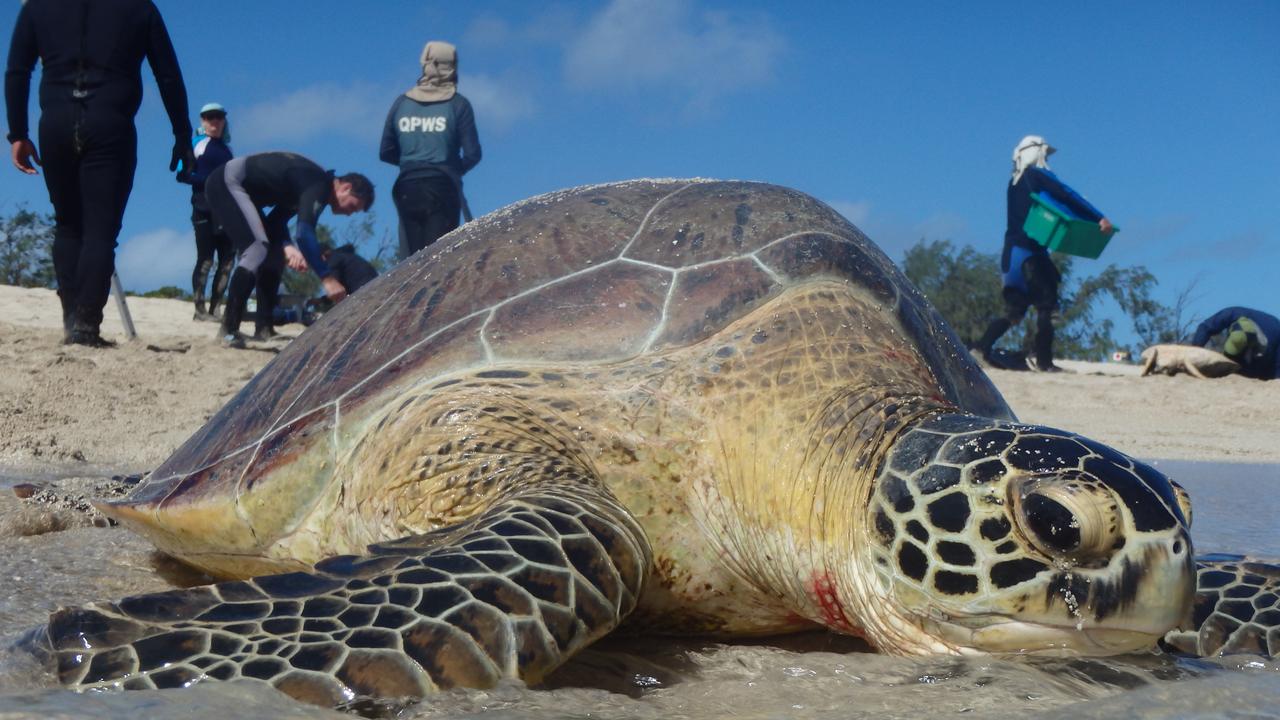Reef turtles ingesting toxic chemical cocktail: report
It would read like a Teenage Mutant Ninja Turtles script if it weren’t so tragic. The toxic cocktail in Reef turtles’ bloodstreams has been revealed.
QLD News
Don't miss out on the headlines from QLD News. Followed categories will be added to My News.
More than 4000 toxic chemical compounds, including heart and gout medication, pesticides and industrial adhesives and metals, have been found in the blood of Great Barrier Reef turtles.

Findings from a joint Griffith University and World Wide Fund for Nature-Australia study released today reveal the staggering level of chemicals being absorbed by coastal green turtles.
Scientists also detected signs of poor health associated with exposure to chemical pollution in the turtles.
“Turtles are accumulating sizeable toxicant loads with largely unknown health effects,” the report says.
WWF marine species project manager Christine Madden Hof said turtles were the “canary in the coal mine” for the Reef.

“We suspect contaminants are also impacting the health of other reef species from whales, dolphins, dugongs and sharks through to the fish, prawns and mud crabs caught by commercial and recreational fishers,” she said.
Ms Madden Hof said the chemicals detected in turtles included heart, gout and kidney stone medication; industrial adhesive, sealant and lubricant; metals including cobalt; herbicides; and pesticides.
But the analysis in the Rivers to Reef to Turtles project also detected substances that could not be identified in global chemical databases.
“The fact that many of the compounds could not be identified means turtles are being exposed to new and emerging contaminants, making corrective action all the more urgent,” Ms Madden Hof said.

Griffith University marine ecologist and ecotoxicologist Jason van de Merwe said it was vital to increase public awareness of the potential health risks associated with chemical contamination of marine habitats and seafood.
“More than 40,000 chemicals have been identified as contaminants of emerging concern but the Great Barrier Reef water quality programs only screen for sediment, nutrients and pesticides,” he said.
“That’s just the tip of the ice berg. They should be testing for commonly used chemicals … and how they affect our Reef and the species that call it home.”

Dr van de Merwe warned that chemicals that washed into Reef waters including antifouling paint, flame retardants, UV filters in sunscreens and pharmaceuticals, could degrade to “form new compounds more toxic than the original chemicals”.
“We know very little about the toxicity of these chemicals on their own and about how harmful they are when they mix together,” he said.
Key recommendations from the report included identifying toxic hot spots on the Reef through expanded monitoring and early warning systems and eliminate unsafe use of chemical in the catchment.




